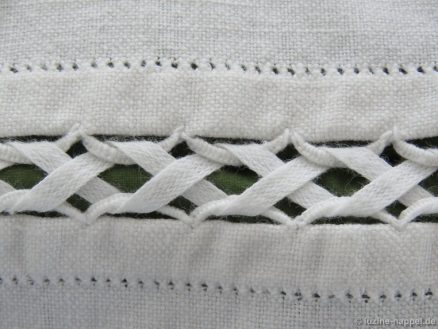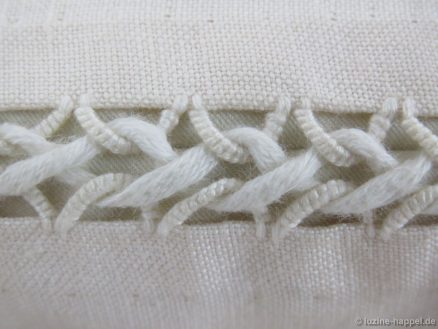The embroidery of sofa cushion cover 1 is washed to remove the outlines and to shrink the fabric to its final extension. Then the linen is ironed in order to be able to measure it exactly. It is then cut to the required size. Here you can cut away different amounts of excess fabric on the short sides in order to have the embroidery placed in the middle of the front part.
The next steps for closing this pillow have already been explained in Closures of Pillowcases (1) – pictures 3 to 8.
This time, however, the pillow is not to be sewn close, but provided with needlelace scallops.
To do this, the hem edges are marked at the desired even distances (here 1.4 cm – it shouldn’t be less) and also consistently on the front and back. To do this, start in the middle and end 2 – 3 cm before reaching the side seams.
Using coton à broder thread No. 16, add simple Buttonhole stitch scallops to the edge.
The cover is ironed again and pulled over a pillow.
Finally, a cord or flat band (at least three times the width of the pillow) is slid through the scallops and pulled together. To do this, it is best to fold the band once in the middle and start on one side of the pillow by pulling the two ends through alternately.
Depending on the size in which you work the needlelace scallops,
which band to use
and how much you tighten the braid, different effects arise.
In any case, this type of closure is decorative.
The closure can be opened again at any time simply by pulling the band out. So it is no wonder that this type of closure was used very often in the Schwalm.











Great idea, I will definitely use it.
Regards, Luzine.
Joanna
Great pictorial photo’s. Thank you so very much.